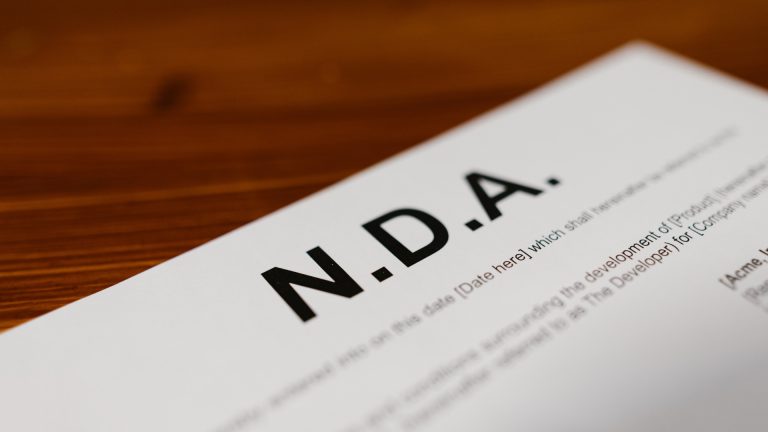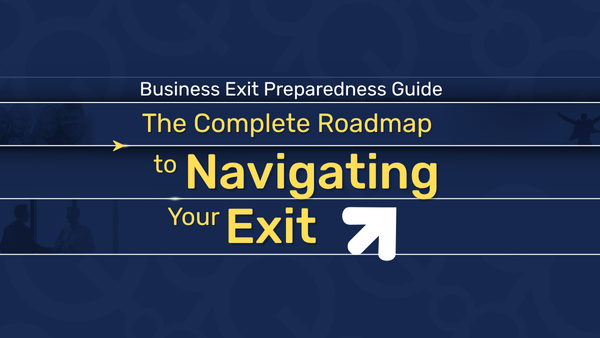The Performance Before the Performance

Just as Broadway actors rehearse extensively before opening night, the smartest business owners practice their exit long before they’re ready to take their final bow. This rehearsal approach has become a crucial strategy for maximizing exit value and minimizing transaction risk.
The data supports this approach. In normal times, getting an accurate valuation of a business or other asset can be challenging. There are multiple inputs that must be considered and a value derived based on various assumptions. In disputes, two experts can arrive at quite different values depending on the calculation method. By practicing your exit, you gain invaluable market intelligence that transforms uncertainty into strategic advantage.
Why the Rehearsal Exit Works

Market Intelligence Without Market Risk
The rehearsal exit allows you to gather crucial market intelligence without the pressure and commitment of an actual transaction. Understanding how potential buyers perceive your business requires stepping outside your familiar routine and seeing your company from an external perspective. Buyers are not just looking for a solid product or service; they want to see a vision, a culture, and a brand that resonates with their own objectives.
This approach enables you to:
- Test different value propositions with various buyer types
- Understand what drives valuation in your specific market
- Identify gaps in your business that need addressing
- Build relationships with potential acquirers before you need them
- Refine your exit story and supporting materials
Learning From the Due Diligence Process
Our approach to a vendor due diligence is to take the lens of a potential buyer, and to orient the work around the areas where they are likely to focus. This involves identifying segments that generate the most revenue, segments that are projected to generate the most growth, and segments that may be at risk, if any.
By conducting mock due diligence exercises, you discover exactly what buyers will scrutinize and can address weaknesses before they become deal-breakers. This preparation is invaluable: Adopting an ‘always on’ readiness for due diligence can help a company exit smoothly, with the optimal valuation.
The Strategic Value of Testing Market Appetite

Understanding Buyer Behavior
Current market conditions create unique opportunities for testing buyer appetite. The Fed’s recent projection of a September 2024 rate cut, combined with a record-high amount of dry powder in the hands of private equity, will likely increase M&A activity across all sectors throughout 2025. This increased activity provides more opportunities to engage with potential buyers in exploratory conversations.
Identifying Your Natural Buyers
Consider who your natural buyers might be. The rehearsal exit process helps you identify and categorize potential acquirers:
Strategic Buyers: Companies in your industry or adjacent markets who could benefit from your capabilities, customer base, or technology.
Financial Buyers: Private equity firms and investment groups focused on your sector or business model.
Emerging Competitors: Rapidly growing companies who might acquire rather than compete.
Since 95%+ of exits with technology companies are through acquisition, the most important questions will revolve around who the potential buyers are and why they want to buy the company.
How to Conduct Your Rehearsal Exit

Phase 1: Internal Preparation
Before engaging with external parties, ensure your house is in order:
Financial Foundation: Start by assessing your financial health. Are your financial statements in order? Do you have accurate and up-to-date records? Potential buyers will scrutinize your financials, so it’s important to have a transparent and organized financial structure.
Quality of Earnings Analysis: A Quality of Earnings (QoE) will also help you identify and rectify any discrepancies before they become red flags during due diligence. Unlike standard financial statements, a QoE report digs deeper into the sustainability of your earnings, identifying the sources of revenue, potential risks, and any anomalies.
Business Model Documentation: Ensure you can clearly articulate your business model, competitive advantages, and growth trajectory.
Phase 2: Soft Market Testing
Strategic Conversations: Begin having informal conversations with industry contacts, advisors, and potential buyers under the guise of “strategic discussions” or “partnership exploration.”
Conference Networking: Use industry events to gauge interest and understand how buyers perceive your company and sector.
Advisory Relationships: Build relationships with investment bankers and business brokers who can provide market insights without formal engagement.
Phase 3: Structured Information Sharing
Controlled Disclosure: Share high-level information about your business through carefully crafted materials that tell your story without revealing sensitive details.
Feedback Collection: Buyers want to connect with the story behind your brand and understand the value it brings to the market. Use storytelling to communicate not just your financial successes but also the impact your business has had on customers and the community.
Market Response Analysis: Analyze feedback to understand valuation expectations, deal structure preferences, and areas of concern.
Refining Your Positioning Through Practice

The Story Evolution
Each rehearsal interaction provides data points for refining your positioning. When preparing for an exit, storytelling plays a big role in how you present your business to potential buyers. Craft a compelling narrative that highlights your company’s journey, mission, and vision.
Key elements to test and refine:
- Value proposition clarity
- Growth story credibility
- Competitive differentiation
- Management team capability
- Market opportunity size
Addressing Buyer Concerns
The rehearsal process reveals common buyer concerns that you can address proactively:
Scalability Questions: Strategic buyers are typically interested in the growth trajectory and future potential profit of businesses. To attract buyers, build a scalable model that showcases your own existing business and its real growth potential in the hands of a strategic buyer.
Risk Mitigation: Understanding buyer risk concerns allows you to develop mitigation strategies and supporting documentation.
Integration Challenges: Learning about potential integration issues helps you position your business as an easy acquisition target.
The Competitive Intelligence Advantage

Understanding the Competitive Landscape
Your rehearsal exit provides insights into how buyers view the competitive landscape and where they see value. Examine their offerings carefully, taking note of features, benefits, pricing, and customer reviews. What are their marketing strategies and how are they engaging with customers? What about sales strategies?
Market Timing Intelligence
Through ongoing market testing, you develop a sophisticated understanding of optimal timing. Market conditions change rapidly: Market Recovery: A recovery in the stock market has played a pivotal role in improving investor confidence. This uplift is largely driven by signs of inflation being brought under control, fostering expectations that interest rates might decrease.
Building Relationships Before You Need Them

The Network Effect
The rehearsal exit builds valuable relationships with potential buyers, intermediaries, and advisors. These relationships become invaluable when you’re ready to execute a real transaction.
Credibility Building
Regular market engagement establishes you as a serious player in your industry, building credibility that enhances your eventual exit value.
Risk Management Through Rehearsal

Avoiding Common Pitfalls
A startling 48% of them didn’t have any exit strategy planned – and most of this was simply down to the fact that the majority of business owners don’t have a full understanding of what takes place in the selling of a business.
The rehearsal exit eliminates this knowledge gap by providing real-world experience with the exit process.
Stress Testing Your Business
Each rehearsal reveals potential stress points in your business model, operations, or positioning that you can address before they impact a real transaction.
When to Start Your Rehearsal

The 3-5 Year Rule
Most experts recommend beginning your rehearsal exit 3-5 years before your intended transaction. This timeline allows sufficient opportunity for multiple rehearsal cycles and meaningful business improvements.
Market Cycle Considerations
Current market conditions favor early preparation. Deal value increased by 18 percent over the prior year, making 2024 the second-highest year on record (behind 2022). Several infrastructure subsectors recorded robust deal activity. This active M&A environment provides ample opportunities for rehearsal activities.
The Technology Advantage

Digital Due Diligence Platforms
Modern technology makes rehearsal exits more efficient and effective. Preparation and project management tools in Ansarada Deals™ can streamline processes and ensure deal readiness.
Data Room Preparation
Use rehearsal processes to build and test your data room, ensuring all materials are buyer-ready when needed.
Managing Confidentiality During Rehearsal

Strategic Disclosure
The art of rehearsal exits lies in gathering intelligence while protecting confidential information. Use tiered disclosure strategies that reveal information progressively based on mutual interest levels.
Professional Guidance
Work with experienced advisors who understand how to conduct market testing without compromising your competitive position or triggering unwanted attention.
Measuring Rehearsal Success

Key Performance Indicators
Track the effectiveness of your rehearsal exit through:
- Quality of buyer interest generated
- Valuation feedback consistency
- Speed of due diligence processes
- Relationship development metrics
- Market positioning improvements
Iterative Improvement
Each rehearsal cycle should produce actionable insights that improve your positioning, story, and business fundamentals.
The Confidence Factor

Reduced Transaction Anxiety
Owners who practice their exit report significantly less stress during actual transactions. Familiarity with the process, buyer expectations, and potential outcomes reduces anxiety and improves decision-making.
Enhanced Negotiation Position
Companies that anticipate buyer questions, have organized documentation, and show clean tax positions often secure higher valuations and faster deal closings. The rehearsal exit puts you in this advantageous position.
Your Rehearsal Roadmap

The rehearsal exit is about being prepared, informed, and strategic. In a world where business owners will need to consider their goals for the transaction more than ever, the rehearsal exit provides the clarity and confidence needed to achieve those goals.
Start your rehearsal today. Begin with internal preparation, gradually engage in market testing, and systematically build the relationships and insights that will power your eventual exit. Remember, the best time to practice your exit is when you don’t need to. When you do need to, it will be too late to rehearse.
The curtain will rise on your exit eventually. Make sure you’re ready for a standing ovation.







